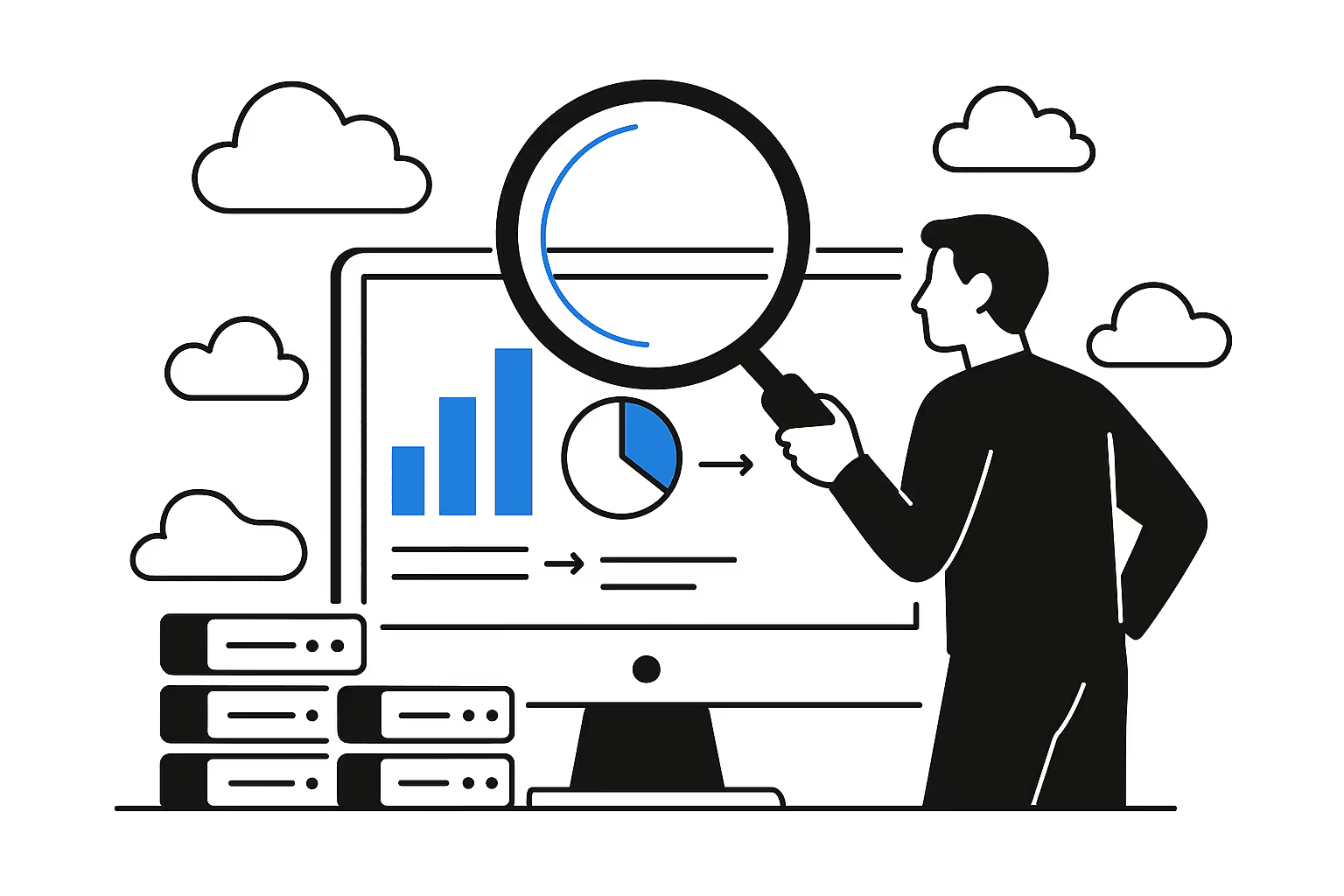Creating a B2B portal or marketplace is an important step in the digital transformation of a business.
Over the past two years, the kt.team team has implemented six major B2B portal development projects for logistics, manufacturing and trading companies. Customers often think that creating a B2B portal is such a complicated process that it requires special preparation. But we don't want to slow down development either: why miss out on potential benefits? IT managers and business owners are concerned about the following issues.
- Competitors have created a B2B portal, so we definitely need it? Is this a universal tool to increase sales, attract new customers, increase profits?
- How to draw up a technical assignment for the development of a B2B portal?
- Is it possible to start developing a portal if the company does not yet have automation? Or should we first clean up and streamline document flow? Is it necessary to optimize business processes in advance?
- In general, how to effectively prepare for the development of a B2B portal?
In this article, we will deal with all these problems, and I will propose an action plan that, in our experience, saves IT management from a huge number of problems.
B2B portal and B2B marketplaces are online platforms for wholesalers. Making a bulk order on such a site is almost as easy as buying groceries in an online retail store. Of course, there are also differences, because B2B has much more pricing factors, more complicated document management and logistics, and, for example, search by article number is used more often than by color or size.
Read more about how such platforms work, what is special about them and how they make sales easier in our recent article”How a B2B portal relieves marketing and management headaches: 9 examples”.
Why do you need a B2B portal? About the importance of goal-setting

The goal of developing a portal or marketplace should be as clear as possible. The option “competitors have created a B2B portal, which means that we also need it, and it is urgent” is bad.
There is no need to succumb to the cargo cult (in the most famous cargo cults, coconut trees and straw, “exact copies” of runways, airports and radio towers are built. The cult's followers build them, believing that these buildings will attract transport planes (who are considered messengers of spirits) filled with cargo) in the hope that millions will fall from the sky as soon as you prepare a B2B platform. Your technical and financial readiness can be very different from your competitor's. Development always involves a large expenditure of resources: financial, labor, and organizational. First, use the unit economy to make sure that development costs will pay off, and make an Impact Map of your goals and impact.
Let's say one of the company's executives in a remote region found out that a leading company in his industry has created a B2B portal. This inspired him; he “caught fire” and wanted to do the same thing: digitize all interactions with his wholesale customers.
But now his company's business processes are absolutely not automated. Orders are made by phone, shipments are made manually, and it takes two weeks to approve a printed order. Most market players in his region do this, and it seems normal and even convenient to his customers. Why does he need digitalization and, most importantly, how should he approach working with a contractor so that it doesn't hurt excruciatingly later? Invest large sums in an IT product for the sake of the product itself? But how then can we assess the success of the development? Will the evaluation scale contain only two values (“Done” or “Not Done”)?
When a customer wants to create a B2B portal, but there is no clearly defined goal why they need it, it's worth setting goals using the Impact Mapping method. I wrote more about this in the article”Impact Mapping, Unit Economy, and PDCA: Smart Management of E-commerce Development”. The Impact Mapping method helps to clearly formulate project goals in accordance with the goals of the entire business. To do this, we need to conduct an in-depth analysis and answer four main questions.
1. Why?
Why do you need this product? What business problem should it solve?
2. Who?
Who can influence this goal?
3. How?
What can he do to bring the project closer to its business goal?
4. What?
What specific steps should a responsible person take as part of his tasks? Here you need to write down detailed functionality for each task.

I would suggest that the business owner from this example conduct two or three consultations on goal-setting. When he digitizes his goals and we see clear project metrics, we will discuss cooperation not in the abstract (“I want it like a competitor's”), but specifically (“I want to get results expressed in terms of X and Y qualitative indicators”). We will talk in more detail about the targets for the B2B portal at the end of the article.
How to draw up a technical assignment for the development of a B2B portal or B2B marketplace?

When working in the Agile paradigm, a detailed technical specification, which customers used to spend six months preparing, makes no sense. Why is that? Read an article by my colleague Jacklyn Buffo for a detailed explanation”MVP, or how not to get into endless development”.
We adhere to flexible approaches to development management and believe that before creating complex software, we must first create an MVP, test it on real users, and only then “finish” and implement improvements. Technical specifications are a waste of time and money, and the information in it becomes obsolete already in the process of writing. While a customer is writing a technical specification, some people may quit, a lot can change in business, and your very vision of the ideal may become completely different. As a result, a few months later, you receive a request to test all the functionality, but it's not a fact that you even remember how it should work.
An example
The IT company developed an MVP (minimum viable version) of a B2B portal for a wholesale supplier and started collecting feedback from retailers who were quite loyal to this supplier and agreed to take part in the tests.
It turned out that retailers who are customers of the platform choose a product and assemble it in batches not exactly as the customer imagined.
For example, when placing an order, it is important for them to control the truck's load. But how exactly should this be implemented in terms of platform functionality? Does the customer always have data on the exact type of truck, maximum load, etc.? All these details are not obvious at the start of the project — they will be identified, clarified and improved after the MVP is released in the process of real interaction between the IT product and the end user.
As a result, the developers made the necessary changes and improvements, which were revealed precisely as a result of receiving live feedback, and not someone's outdated hypotheses recorded in the technical specifications. And after the release, the portal received a high NPS from users (customer loyalty index). In this case, both the team and the customer felt very well what losses MVP helps to avoid and how important it is to get quick feedback about the product.
Do you need to review all your business processes and optimize them before contacting developers?

You do not need to do this in advance. In the process of developing a B2B portal, all business processes are still being revised, revised, and optimized. We work in confusing environments where we need to understand the current location, the desired endpoint, and base each sprint not on features, but on changes in metrics, and after setting a goal, form tasks and check changes in metrics.
A B2B portal is the result of a major complex transformation.
What is creating a B2B portal? This is an attempt to optimize some processes: get to know your customer better, reduce processing costs, and improve the quality of service through better work organization.
The result can be expressed in the following quantitative metrics:
- increasing the frequency of orders (remember yourself — you probably also buy at that online store more often and order a taxi more often in an application that has autofill forms and your card is already linked. B2B purchases are also made by people, not robots, who, all other things being equal, prefer quick and easy ordering);
- optimization of the order structure (a seller can stimulate demand for goods in a beneficial way: people often order what the system recommends, rather than what they are used to ordering);
- increasing profits through additional services (tender support, financial and legal services, etc.).
No portal is simply limited to the technical implementation of the “EDI site”. During the development process, 100% will have many processes that will have to be improved along the way. But the acceleration of movement does not occur due to an increase in the number of tasks.
The main thing is choosing the right priorities.
The PDCA cycle helps to determine priorities, the meaning of which is simple: select the metrics you want to change, make sure they are balanced (quantity/quality), decompose, if necessary, into narrower metrics that can be changed within the sprint, select tasks to change them that will fit into the sprint, check the metrics and learn (gain experience — whether metrics have changed or not).

An example
You have implemented a B2B portal, but none of your metrics have improved during use, and each manager continues to manually process data from electronic forms.
This is because when a visitor fills out the registration form on the B2B portal, their email goes to an employee who must go to the site and manually add this user to the B2B portal. It turns out that the quality metric (manager's load factor) has remained the same or has even deteriorated. Once this is discovered, in the next sprint, you need to make sure that customers register themselves. This is how this metric will improve.
Let us sum up the results. Review business processes before automation:
- difficult (and still, the process will require changes again);
- inefficient from the point of view of lean production, because these actions are not working now; these are losses.
The main thing is to define metrics and change business processes along the way so that changes occur along with development according to the Deming cycle.
The introduction of a B2B portal is usually aimed at improving the management culture and optimizing business processes. This is another reason why business processes should be reviewed together with all goals and metrics.
We reviewed the main mistakes that prevent customers from properly preparing for the development of a B2B portal. A step-by-step training plan will help you avoid these mistakes — we will share it in the second part of the article.








